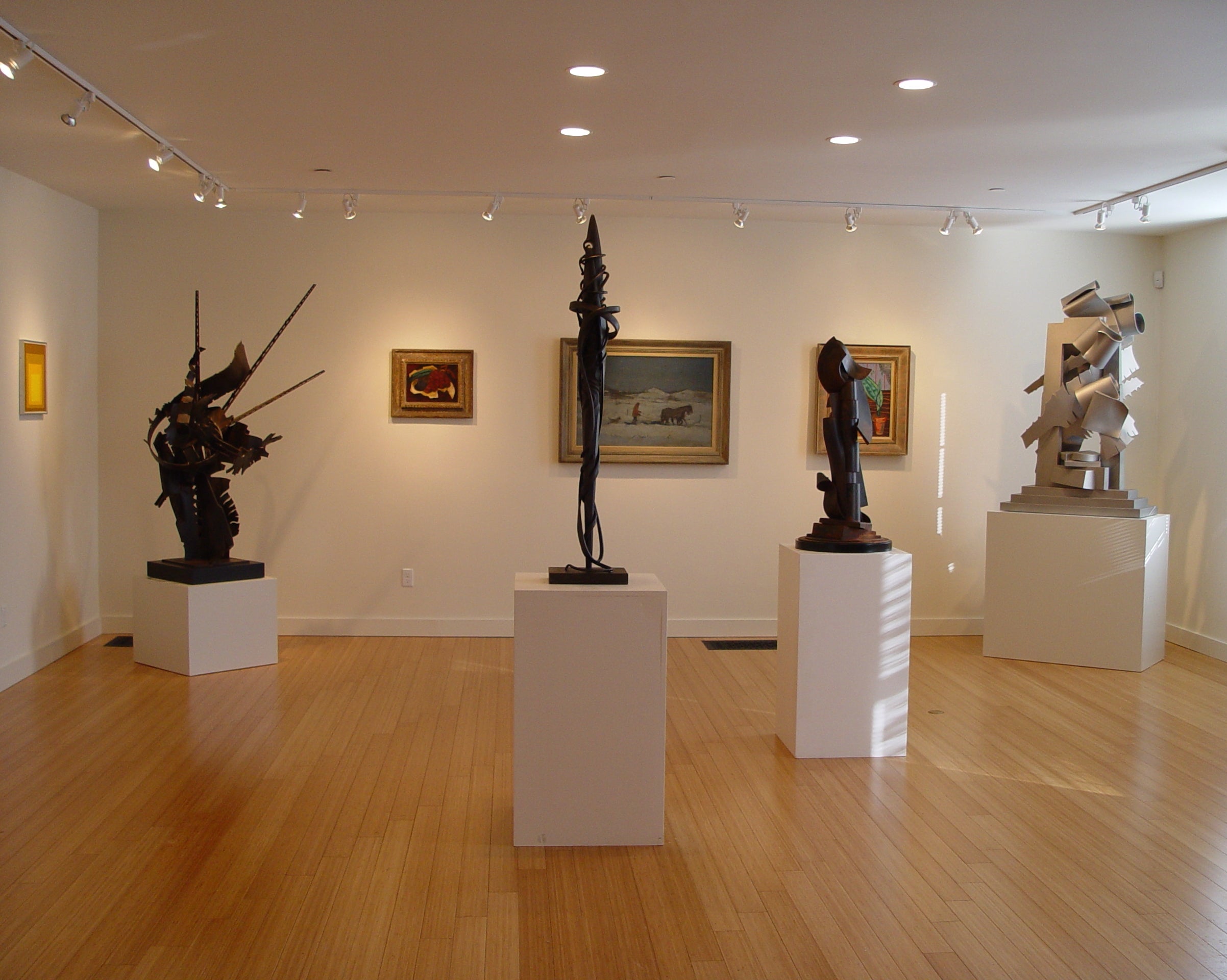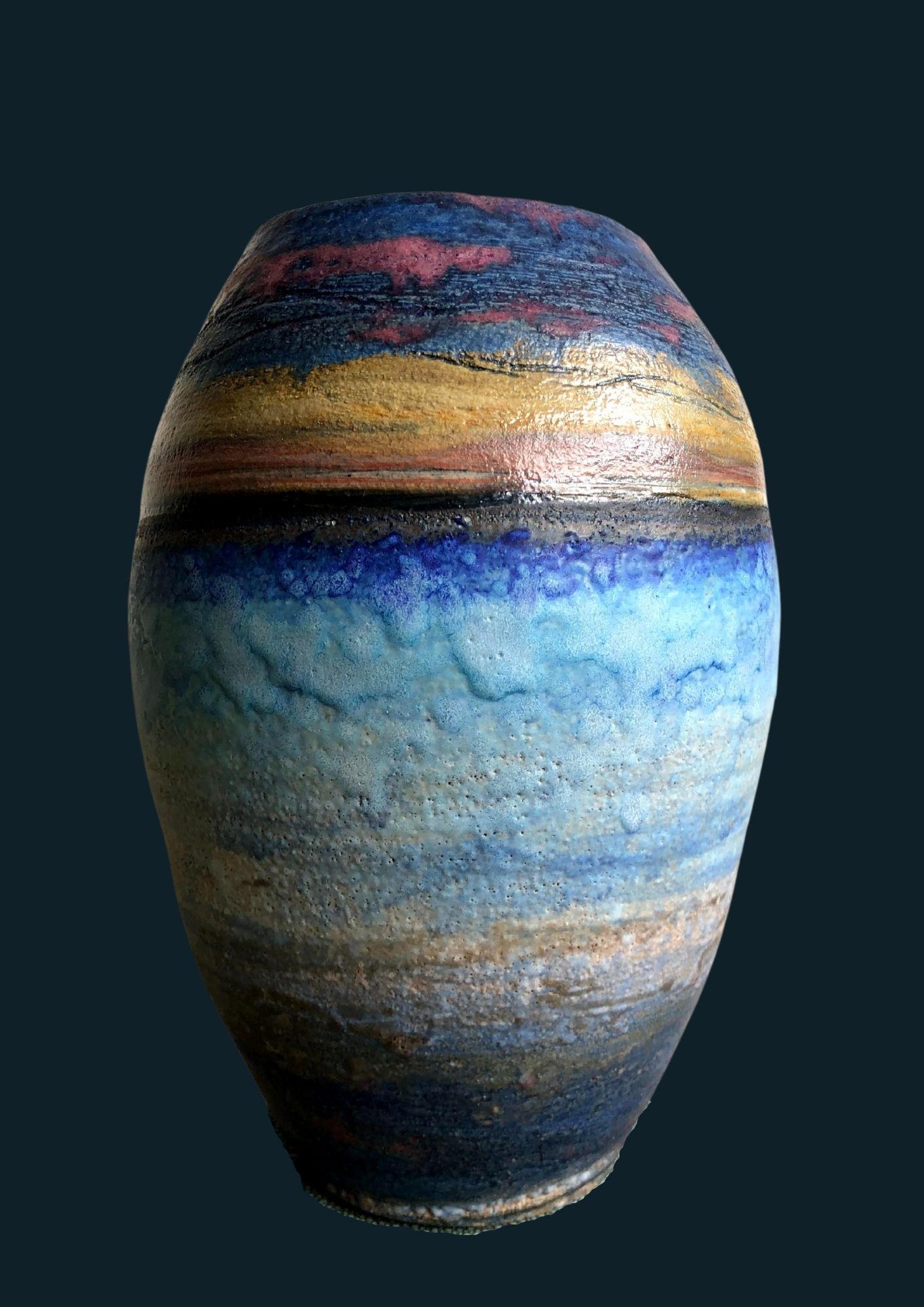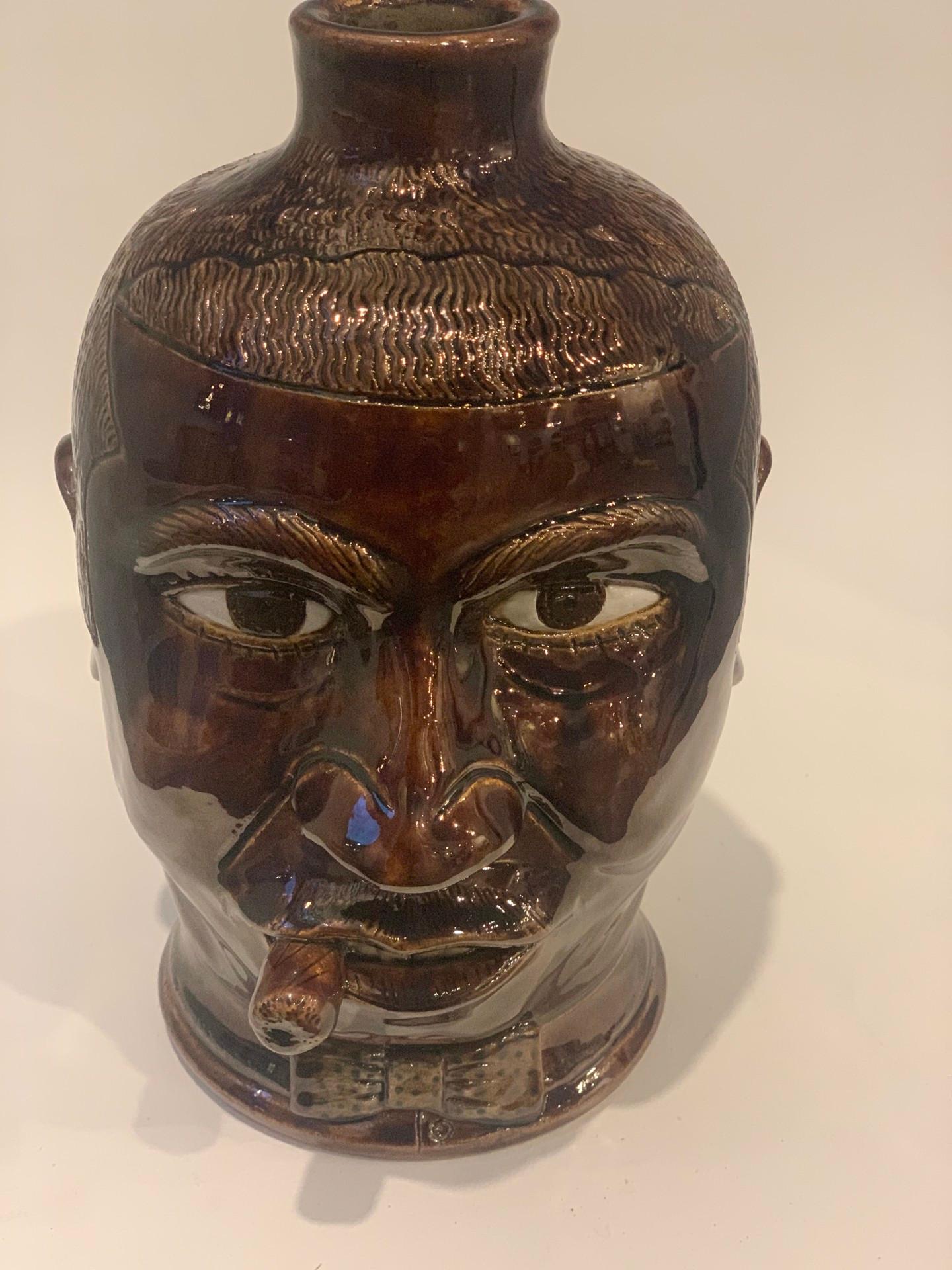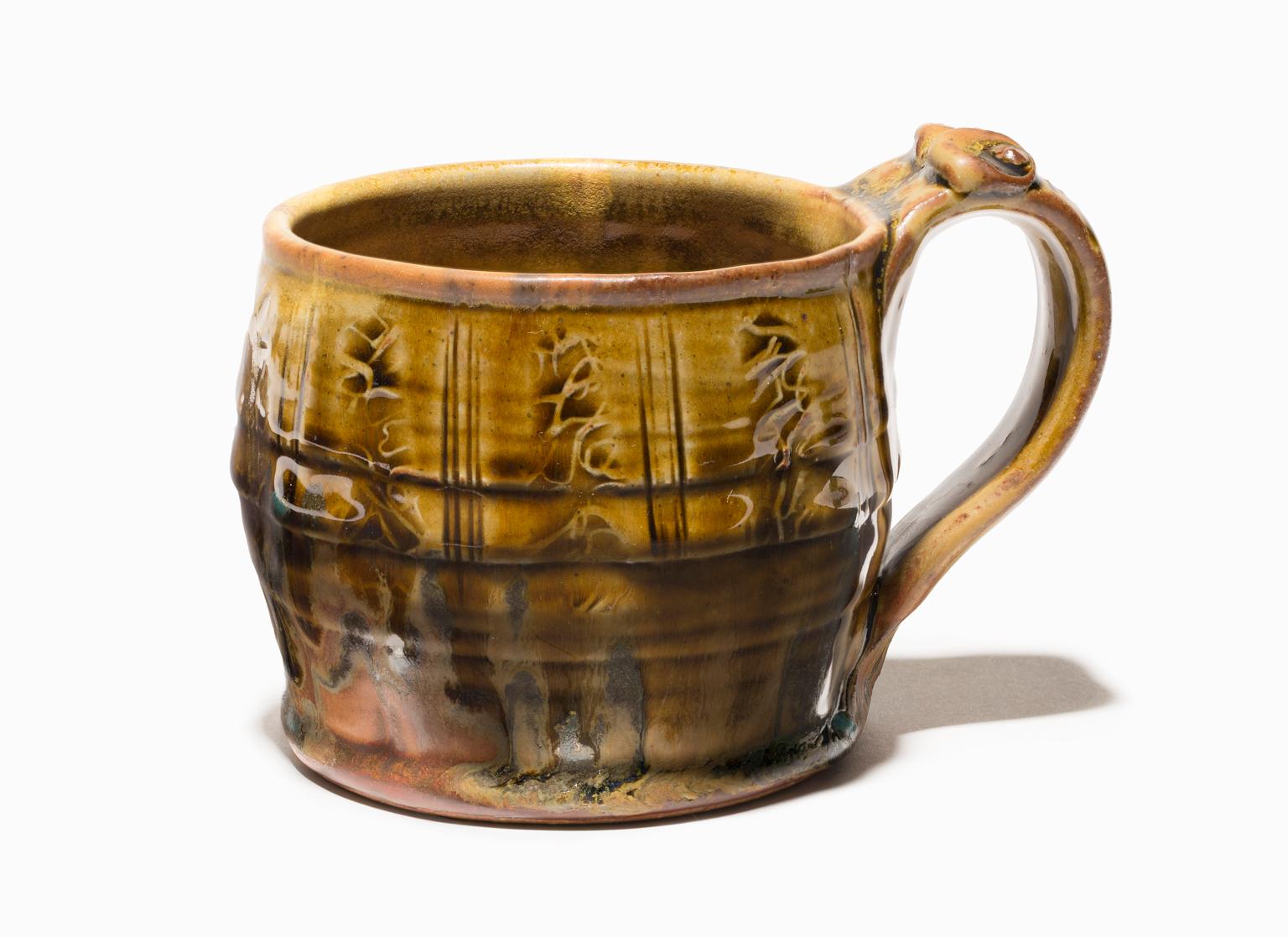Items Similar to Two-handled Double-lipped Flower Vase, Aubergine with Gold and Green
Want more images or videos?
Request additional images or videos from the seller
1 of 9
Morino Hiroaki TaimeiTwo-handled Double-lipped Flower Vase, Aubergine with Gold and Green2004
2004
About the Item
MORINO HIROAKI TAIMEI (b.1934)
Two-handled Double-lipped Flower Vase, Aubergine with Gold and Green, 2004
Stoneware
9.75 x 8.5 x 7.25 inches
With artist signed tomobako
PROVENANCE
Private collection, Boston, MA
- Creator:Morino Hiroaki Taimei (1935)
- Creation Year:2004
- Dimensions:Height: 9.75 in (24.77 cm)Width: 8.5 in (21.59 cm)Depth: 7.25 in (18.42 cm)
- Medium:
- Period:
- Condition:
- Gallery Location:Concord, MA
- Reference Number:

About the Seller
4.4
Vetted Seller
These experienced sellers undergo a comprehensive evaluation by our team of in-house experts.
Established in 1993
1stDibs seller since 2014
50 sales on 1stDibs
- ShippingRetrieving quote...Ships From: Concord, MA
- Return PolicyThis item cannot be returned.
More From This SellerView All
- Blue and White BottleLocated in Concord, MAKONDO YUTAKA (1932-1983) Blue and White Bottle, c.1960 Stoneware, blue and white with gestural streak 11.875 x 4.25 inches With artist signed tomobako Ko...Category
1960s More Art
MaterialsStoneware
- Amoeboid BrownLocated in Concord, MAKAZUO TAKIGUCHI (b.1953) Amoeboid Brown, 2003 Stoneware 7 x 17 x 22 inches With artist signed tomobako Provenance Artist's studio Eric Zetterquist, NYC Private collection, MA His sculptural process is both complicated and highly creative. Using pulleys...Category
Early 2000s Sculptures
MaterialsStoneware, Ceramic
- Cone VaseLocated in Concord, MAKITAMURA JUNKO (b. 1956) Cone Vase, c. 1993 Stoneware, black slip, inlay, with signed tomobako 4.5 x 10 inches With artist signed tomobako Kitamura Ju...Category
1990s More Art
MaterialsStoneware, Slip
- Jomon-Zogan Square Flask with Rope Imprint and Geometric Inlay MotifBy Tatsuzo ShimaokaLocated in Concord, MATATSUZO SHIMAOKA (1919-2007) Jomon-Zogan Square Flask with Rope Imprint and Geometric Inlay Motif Stoneware 5 x 4 x 2.625 inches With artist signed tomobako Tatsuzō Shimaoka (島岡 達三, Shimaoka Tatsuzō...Category
20th Century More Art
MaterialsCeramic, Stoneware
- Tea Bowl with nezumi-shino glazeLocated in Concord, MAWAKAO TOSHISADA (b. 1933) Tea Bowl with nezumi-shino glaze, 1998 With signed tomobako Stoneware 3.625 x 5 x 5 inches With artist signed tomobako Born in ...Category
1990s More Art
MaterialsStoneware
- Colored Clay Wind-wrought Patterns in the Sand Flower Vessel (Desai fumon kaki)Located in Concord, MAMiyashita Zenji Colored Clay Wind-wrought Patterns in the Sand Flower Vessel (Desai fumon kaki), C. 1995 Glazed stoneware with colored clay inlay 7.125 x ...Category
1990s More Art
MaterialsClay, Stoneware, Glaze
You May Also Like
- Large Minoan Vessel with Sunset - Colin Caffell, Atlantic, Cornwall, MoorlandBy Colin CaffellLocated in Knowle Lane, CranleighA Large Minoan style vessel inspired by the views, constantly changing light and rugged beauty of the Atlantic Ocean and coastal moorland of Wes...Category
2010s Impressionist More Art
MaterialsCeramic, Stoneware
- Eugene Tribute Jug (Uncle Frank)Located in Charelston, SCWinton and Rosa Eugene are self-taught potters who have been creating award winning stoneware pottery together in South Carolina for over thirty-four years. Born and raised in Louisiana and South Carolina respectively, the couple made a second career in pottery making. Rosa is a retired nurse and Winton retired from a carpet installation business. He also served as an army paratrooper during the Vietnam War. Winton first learned to turn pots on a traditional kick wheel after being encouraged to do so by Rosa and their daughter Fredriana. A decade later, Rosa began coiling and glazing in collaboration with Winton. Today Winton creates pottery using an electric wheel and does most of the decorative work, while Rosa specializes in customizing and applying glazes and her repertoire includes a diverse range of types and colors. Rosa also produces large pieces of pottery including large bowls, vases, and decorative forms using the coiled method. Most of the Eugenes' pottery incorporates detailed decorative work including painted scenes and carved relief work. These decorative elements involve images from nature and the surrounding environment. As Winton says, “In two hundred years, I want these things about my daily life to stand out, so others will know this is where I worked and lived.” Their experiences growing up in Louisiana and South Carolina, along with many years living in Chicago, inform much of their work. The couple received honorary doctoral degrees in Fine Art from the University of South Carolina. Their work has been exhibited in museums across the globe including China, Germany, and throughout the South. Their rare and highly collectible Tribute Jugs are a part of the ground breaking traveling exhibit The Dirty South: Contemporary Art, Material Culture, and the Sonic Impulse, organized by the Virginia Museum of Fine Arts (VMFA) and curated by Valerie Cassel . The art exhibit proposes that the culture of the African American South, as defined by music and vernacular art, is the bedrock of American culture itself, with a strong influence on new art today. Their work is featured at Neema Fine Art Gallery. Tribute Jugs are inspired by face jugs created by David Drake...Category
21st Century and Contemporary More Art
MaterialsStoneware, Glaze
- Eugene Uncle Cig' Head JugLocated in Charelston, SCEugene Uncle Cig' Head Jug, 2020Category
21st Century and Contemporary More Art
MaterialsStoneware
- Eugene Tribute Jug (Miss Mildred)Located in Charelston, SCWinton and Rosa Eugene are self-taught potters who have been creating award winning stoneware pottery together in South Carolina for over thirty-four years. Born and raised in Louisiana and South Carolina respectively, the couple made a second career in pottery making. Rosa is a retired nurse and Winton retired from a carpet installation business. He also served as an army paratrooper during the Vietnam War. Winton first learned to turn pots on a traditional kick wheel after being encouraged to do so by Rosa and their daughter Fredriana. A decade later, Rosa began coiling and glazing in collaboration with Winton. Today Winton creates pottery using an electric wheel and does most of the decorative work, while Rosa specializes in customizing and applying glazes and her repertoire includes a diverse range of types and colors. Rosa also produces large pieces of pottery including large bowls, vases, and decorative forms using the coiled method. Most of the Eugenes' pottery incorporates detailed decorative work including painted scenes and carved relief work. These decorative elements involve images from nature and the surrounding environment. As Winton says, “In two hundred years, I want these things about my daily life to stand out, so others will know this is where I worked and lived.” Their experiences growing up in Louisiana and South Carolina, along with many years living in Chicago, inform much of their work. The couple received honorary doctoral degrees in Fine Art from the University of South Carolina. Their work has been exhibited in museums across the globe including China, Germany, and throughout the South. Their rare and highly collectible Tribute Jugs are a part of the ground breaking traveling exhibit The Dirty South: Contemporary Art, Material Culture, and the Sonic Impulse, organized by the Virginia Museum of Fine Arts (VMFA) and curated by Valerie Cassel . The art exhibit proposes that the culture of the African American South, as defined by music and vernacular art, is the bedrock of American culture itself, with a strong influence on new art today. Works by the Eugenes are available at Neema Fine Art Gallery. Their Tribute Jugs are inspired by face jugs created by David Drake...Category
21st Century and Contemporary More Art
MaterialsStoneware, Glaze
- John Glick Plum Tree Pottery , Stoneware Mug, Deep Earth Tones, GlazedLocated in Detroit, MI“Untitled” ceramic, is an example of the kind of work by which John Glick became so famous. He was seduced by the effects of the reduction kiln, which decreased the levels of oxygen during firing, inducing the flame to pull oxygen out of the clay and glazes changing the colors of the glazes depending on their iron and copper content. In this way he achieved the rich gradients of ochre and umber and variations in stippling and opacity. This piece is signed on the bottom and can be found on page 129, plate #236 in “John Glick: A Legacy in Clay.” John was an American Abstract Expressionist ceramicist born in Detroit, MI. Though open to artistic experimentation, Glick was most influenced by the styles and aesthetics of Asian pottery—an inspiration that shows in his use of decorative patterns and glaze choices. He has said that he is attracted to simplicity, as well as complexity: my work continually reflects my re-examination that these two poles can coexist… or not, in a given series. Glick also took influences from master potters of Japan, notably Shoji Hamada and Kanjrio Kawai, blending their gestural embellishments of simple forms with attitudes of Abstract Expressionism. He was particularly drown to the work of Helen Frankenthaler whose soak-stain style resonated with Glick’s multi-layered glaze surfaces, which juxtaposed veils of atmospheric color with gestural marks and pattern. He spent countless hours developing and making his own tools in order to achieve previously unseen results in his work with clay and glaze. Glick’s “Plum Tree Pottery...Category
Late 20th Century American Modern More Art
MaterialsStoneware, Glaze
- John Glick Plum Street Pottery Reduction Fired Shino Glaze Cup Published in BookLocated in Detroit, MI“Untitled” ceramic, is an example of the kind of work by which John Glick became so famous. He was seduced by the effects of the reduction kiln, which decreased the levels of oxygen during firing, inducing the flame to pull oxygen out of the clay and glazes changing the colors of the glazes depending on their iron and copper content. In this way he achieved the rich gradients of ochre and umber and variations in stippling and opacity. This piece is signed on the bottom and can be found on page 92, plate #125 in “John Glick: A Legacy in Clay.” John was an American Abstract Expressionist ceramicist born in Detroit, MI. Though open to artistic experimentation, Glick was most influenced by the styles and aesthetics of Asian pottery—an inspiration that shows in his use of decorative patterns and glaze choices. He has said that he is attracted to simplicity, as well as complexity: my work continually reflects my re-examination that these two poles can coexist… or not, in a given series. Glick also took influences from master potters of Japan, notably Shoji Hamada and Kanjrio Kawai, blending their gestural embellishments of simple forms with attitudes of Abstract Expressionism. He was particularly drown to the work of Helen Frankenthaler whose soak-stain style resonated with Glick’s multi-layered glaze surfaces, which juxtaposed veils of atmospheric color with gestural marks and pattern. He spent countless hours developing and making his own tools in order to achieve previously unseen results in his work with clay and glaze. Glick’s “Plum Tree Pottery...Category
1990s American Modern More Art
MaterialsStoneware, Glaze





